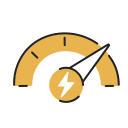Balancing Work and Life in a Remote Environment
Finding the right balance between professional and personal life has become both an exciting opportunity and a unique challenge in the era of remote work. With the boundaries between home and office gradually disappearing, many individuals struggle to maintain productivity while also prioritizing their well-being. The remote environment, while offering flexibility and convenience, can blur the lines and create new demands that disrupt routines. This page explores strategies, mindsets, and practical approaches to help you navigate the complexities of balancing your work obligations with a fulfilling life outside the virtual office.

Setting Boundaries for Success
Defining Your Workspace
Creating a dedicated workspace within your home environment isn’t just about ergonomics—it’s about sending a signal to your brain and your household that you’re “at work.” Whether it’s a full-fledged home office or a simple corner of a room, having a specific area reserved for working can help establish mental boundaries. Moving to this space at designated times cues productivity, while stepping away at the end of your workday can help you transition into personal time. Over time, this distinction becomes habitual, making it easier to mentally “clock out” and protect your well-being.
Establishing Clear Work Hours
In a remote environment, the start and end of your workday can become ambiguous, resulting in longer hours and potential exhaustion. By defining specific work hours and adhering to them, you create a sense of normalcy and predictability. Communicate your schedule to both your team and those you live with. This transparency allows colleagues to respect your personal boundaries and helps your family or roommates understand when you need uninterrupted time. Over time, this routine becomes second nature, safeguarding your leisure hours and reducing work-related intrusions.
Managing Communication Expectations
Remote work often leads to an “always-on” mentality, fueled by instant messaging apps and constant connectivity. Setting expectations about your response times can help manage both internal and external communication pressures. Letting your team know the windows when you’ll be fully available for meetings or quick replies prevents misunderstandings and reduces stress. Asynchronous communication tools can also free you from the expectation of immediate replies, enabling you to focus on deep work when needed and truly rest during your downtime.


The lack of structured breaks in a remote environment makes it easy to slip into long, uninterrupted periods of sitting or working, which can impact both physical and mental well-being. Deliberately scheduling time for movement, whether it’s stretching, taking a walk, or practicing mindfulness, can recreate some of the healthy interruptions found in an office setting. Morning rituals, regular lunch breaks, and winding-down activities in the evening ensure that your days aren’t solely defined by work tasks. Over time, these routines become integral to maintaining your energy and maintaining balance.

Remote work can sometimes foster a sense of isolation, diminishing the spontaneous interactions and camaraderie that occur naturally in physical workplaces. Proactively nurturing social connections—both professional and personal—helps combat loneliness and reinforces a sense of belonging. Engaging in virtual coffee breaks, connecting with friends outside of work, or joining online communities can sustain your social well-being. Investing in these relationships not only brings joy and support but also inspires new perspectives, enriching both your work and your life outside of it.

The flexibility of remote work can lead to overextension, making it important to monitor and address stress before it becomes overwhelming. Paying attention to your own signals—such as irritability, fatigue, or declining motivation—can alert you to the need for rest or adjustment. Regular check-ins with yourself or trusted colleagues, mindfulness exercises, or even periodic digital detoxes can reset your mental state. By treating stress management as an essential part of your remote work routine, you safeguard your well-being and create a foundation for sustainable success.
Enhancing Productivity in Flexible Settings
Mastering Time Management
In a remote setting, how you allocate each hour becomes paramount. Tools such as digital calendars, task lists, and focus techniques (like the Pomodoro method) can help you stay organized and on task. Setting clear goals for each day and breaking larger projects into manageable chunks makes it easier to track progress and avoid procrastination. By designing your schedule to reflect your most productive periods and planning breaks around them, you optimize both output and well-being, ensuring that work doesn’t spill endlessly into personal time.
Minimizing Distractions
Home environments are filled with distractions—from family members and household chores to the allure of digital entertainment. Identifying your most common sources of interruption allows you to create strategies to minimize them. This might include using noise-canceling headphones, setting boundaries with roommates, or employing website blockers during deep work sessions. Recognizing when your attention wanes and having a plan to refocus can significantly enhance productivity, enabling you to complete tasks efficiently and preserve more time for life beyond work.
Leveraging Technology Wisely
Remote work is powered by technology, but its overuse or misuse can create inefficiencies and raise stress levels. Selecting the right collaboration tools and learning their features allows you to streamline workflows and minimize unnecessary meetings or email threads. Automating repetitive tasks, using project management apps, and setting “do not disturb” periods on communication platforms ensure that technology serves you, rather than distracts you. By using digital resources thoughtfully, you can accomplish your goals while keeping work manageable and contained.
